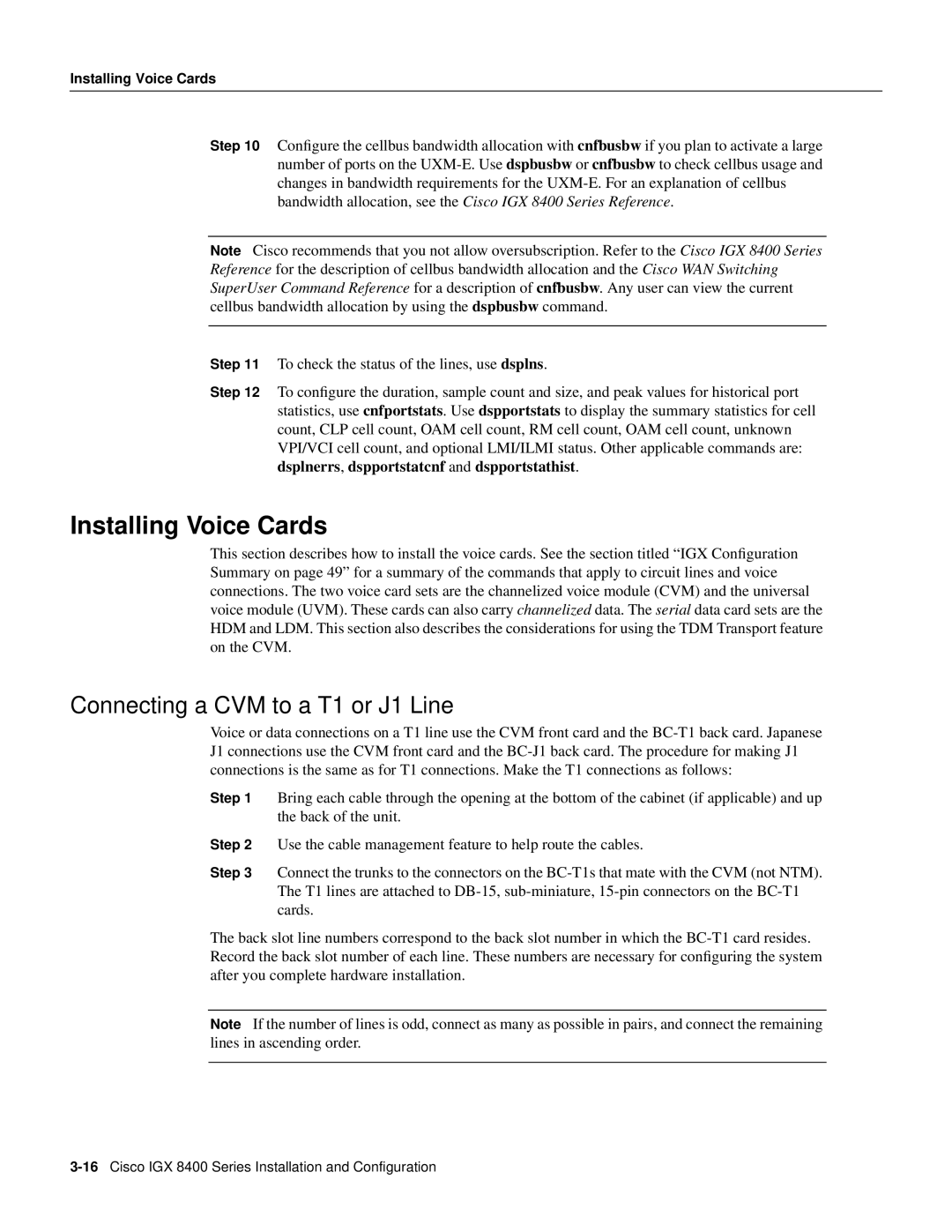
Installing Voice Cards
Step 10 Configure the cellbus bandwidth allocation with cnfbusbw if you plan to activate a large number of ports on the
Note Cisco recommends that you not allow oversubscription. Refer to the Cisco IGX 8400 Series Reference for the description of cellbus bandwidth allocation and the Cisco WAN Switching SuperUser Command Reference for a description of cnfbusbw. Any user can view the current cellbus bandwidth allocation by using the dspbusbw command.
Step 11 To check the status of the lines, use dsplns.
Step 12 To configure the duration, sample count and size, and peak values for historical port statistics, use cnfportstats. Use dspportstats to display the summary statistics for cell count, CLP cell count, OAM cell count, RM cell count, OAM cell count, unknown VPI/VCI cell count, and optional LMI/ILMI status. Other applicable commands are: dsplnerrs, dspportstatcnf and dspportstathist.
Installing Voice Cards
This section describes how to install the voice cards. See the section titled “IGX Configuration Summary on page 49” for a summary of the commands that apply to circuit lines and voice connections. The two voice card sets are the channelized voice module (CVM) and the universal voice module (UVM). These cards can also carry channelized data. The serial data card sets are the HDM and LDM. This section also describes the considerations for using the TDM Transport feature on the CVM.
Connecting a CVM to a T1 or J1 Line
Voice or data connections on a T1 line use the CVM front card and the
Step 1 Bring each cable through the opening at the bottom of the cabinet (if applicable) and up the back of the unit.
Step 2 Use the cable management feature to help route the cables.
Step 3 Connect the trunks to the connectors on the
The back slot line numbers correspond to the back slot number in which the
Note If the number of lines is odd, connect as many as possible in pairs, and connect the remaining lines in ascending order.
